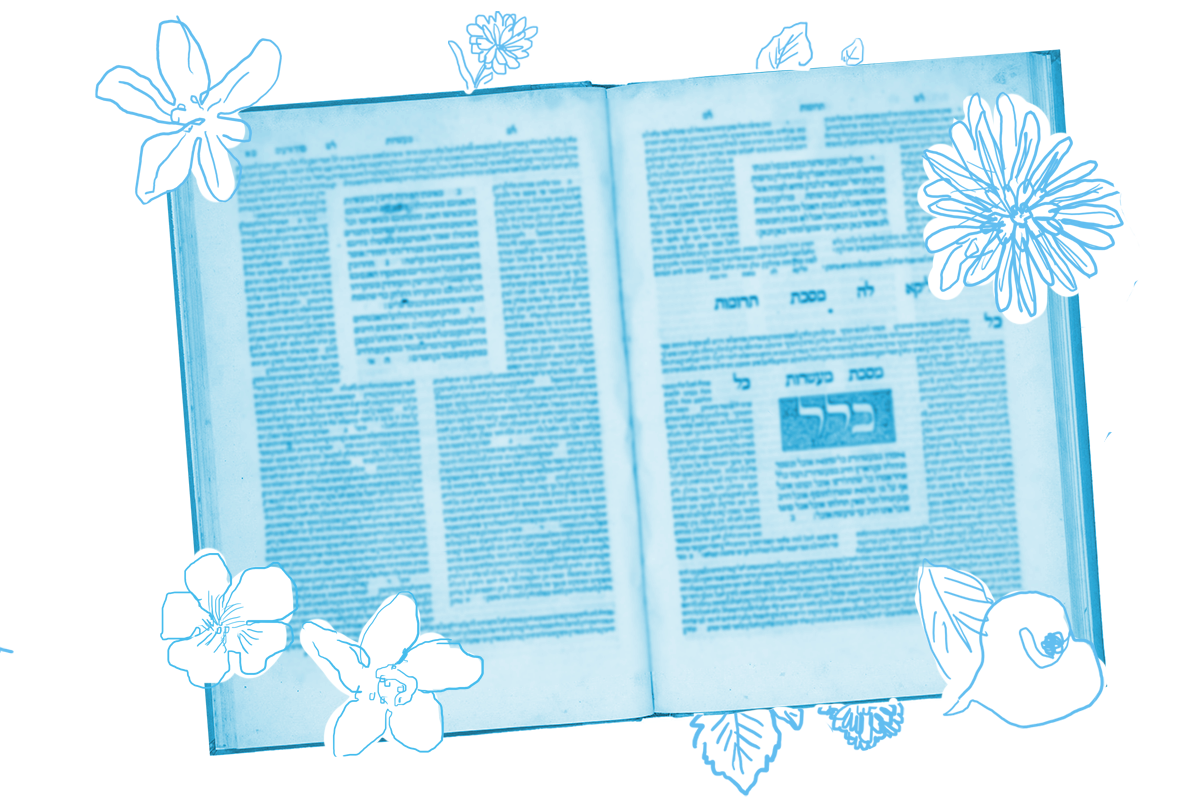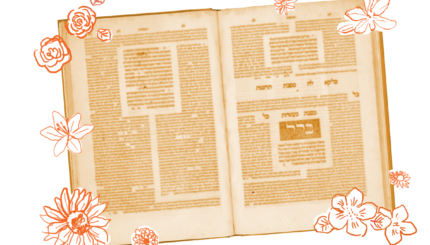Today we reach the last page of Tractate Sukkah, and our study ends with a strange and tragic tale. The occasion for this story is a note in the final mishnah of the tractate that one of the priestly watches, that of Bilga, was only permitted to divide showbread in the south of the Temple and that their ring was immovable and their niche sealed up.
What on earth does all of this mean?
First, priestly watches: The priests were divided into 24 familial groups that took turns carrying out the Temple duties. The Bible describes this division of labor, but the Talmud elaborates: Each of the 24 watches, which lived throughout the land of Israel, was assigned to work in the Temple for a week at a time (Taanit 2:4). (Likewise, the Levites were divided into 24 watches that rotated through service, and even the Israelites were divided into watches that were supposed to send representatives to offer Temple sacrifices.)
During their week on duty, each watch would offer the daily sacrifices. The changeover would happen on Shabbat, with the outgoing watch offering the morning and afternoon sacrifices, and the incoming watch overseeing the evening sacrifices and replacing the showbread for the new week (Tosefta Sukkah 4:24–25). On major festivals, the first mishnah on today’s page suggests, all 24 watches would work together in the Temple. Each watch also received a portion of the old showbread, the division of which was a matter of complex negotiation — another discussion on today’s page!
One of these watches was in perpetual disgrace. At the beginning of their week of service, the family of Bilga was required to divide their showbread in the south of the Temple, the location ordinarily used by the outgoing watch, not the incoming watch, which divided in the north. This seems to have symbolically labelled them as “on their way out” in perpetuity. In addition, their niche — the place they were given to store their kit — was sealed, and their ring for performing sacrifices was bolted down, rendering it useless. These too were signs of disgrace.
Why these harsh measures? The Gemara offers two possibilities. One is that the family of Bilga was perpetually late, forcing the priestly shift that preceded them to work overtime. But the more evocative explanation comes in the form of a story at the very end of today’s daf:
There was an incident involving Miriam, the daughter of Bilga, who apostatized and married a soldier of the Greek kings. When the Greeks entered the Temple, she entered with them and kicked the altar with her sandal, saying: “Wolf, wolf, how long will you consume the property of the Jewish people, and yet you do not stand with them when they face exigent circumstances?”
If you remember the story of Hanukkah, you know that the Greek king Antiochus ordered his troops into the Temple where they defiled the altar by pouring pig blood on it and setting up an idol of Zeus. Perhaps because she was looking to impress her new husband, Miriam charged into the Temple with them and, adding her own bit of insult to this affront, kicked the altar (I love that the text reminds us she would have been wearing sandals — that must have hurt!) and called it a hungry wolf because it “devoured” the sacrificial sheep of the Israelites yet could not save them from Greek conquest.
Of course, from the perspective of the Talmud, the joke is on Miriam. The Maccabees recaptured the Temple, rededicated it, and then eventually Herod built it to be even more magnificent than before — a wonder of the ancient world (as we read on Sukkah 51). But her betrayal, impotent as it was, cast a dark shadow on her clan forever.
It’s a somber denouement for a tractate that has been in many ways a crescendo of joy (recall that one of the names for Sukkot is z’man simchateinu — “season of our rejoicing”). We began by discussing the construction of the sukkah, a temporary dwelling that evokes the wandering of the Israelites in the wilderness, a place that is both a permanent residence for the week but also avowedly temporary; a place where the roof is the most important component, and also the leakiest; a place where the people can meet the divine presence. The tractate progressed through discussions of the four species, the lulav and etrog, the remarkable foreign fruit that became a central symbol of Judaism in antiquity. And finally, we came to Temple practice on Sukkot, including the raucous and ecstatic celebrations accompanying the water-drawing festival, filling Jerusalem with light and music.
In some ways, this story — which on the surface is simply a digression engendered by the fact that Sukkot required so many sacrifices that it made extra work for all 24 priestly watches, which in turn inspires a story about one of those watches — cuts against the grain of the whole, a tale of one symbolic betrayal by an otherwise unknown woman pitched against images of an entire people engaged in rapturous celebration. Perhaps wishing to recapture that sense of joy, the Gemara artfully shifts gears in the final line:
And due to Miriam’s father and mother (who may have educated her to turn away from her people) do we penalize the entire watch? Abaye said: Woe unto the wicked, woe unto his neighbor. But good for the righteous, good for his neighbor, as it is stated: Say of the righteous that it shall be good for him, for they shall eat the fruit of their doings. (Isaiah 3:10)
Read all of Sukkah 56 on Sefaria.
This piece originally appeared in a My Jewish Learning Daf Yomi email newsletter sent on September 1st, 2021. If you are interested in receiving the newsletter, sign up here.



